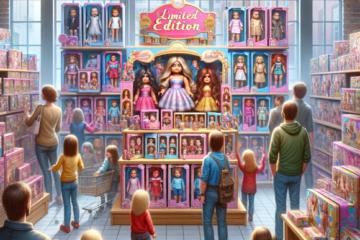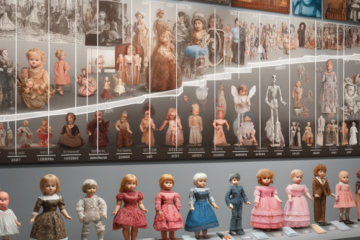In the realm of childhood play, dolls stand as enduring companions, fostering creativity, imagination, and emotional development. Yet, behind the enchanting smiles and vibrant outfits lies a profound question: How can we ensure the longevity and sustainability of these cherished playthings and the materials from which they’re crafted?
Dolls, with their diverse forms and materials, have long captured the hearts of children and adults alike. From traditional rag dolls to modern plastic figurines, each incarnation holds a story, a memory, and a connection to the past or present. However, as society grapples with environmental challenges, the conversation surrounding the durability and sustainability of these beloved toys becomes increasingly important.
When we consider the durability of dolls, we delve into more than just their ability to withstand the rigors of play. We also ponder their capacity to endure through generations, transcending time and trends. A well-crafted doll can become a cherished heirloom, passed down from parent to child, carrying with it the joys and memories of past playtimes. Yet, achieving this level of longevity requires careful consideration of materials and craftsmanship.
Historically, dolls were often handmade from natural materials such as cloth, wood, and clay. These materials, while biodegradable, possess a timeless quality that lends itself to durability. They age gracefully, developing a patina that tells the tale of years gone by. However, in the age of mass production, many dolls are crafted from synthetic materials like plastic, which present unique challenges in terms of both durability and sustainability.
Plastic dolls, while often inexpensive and easily mass-produced, are not without their drawbacks. They are prone to wear and tear, with joints that may weaken over time, leading to breakage. Additionally, their production relies heavily on non-renewable resources and contributes to plastic pollution, posing significant environmental concerns.
In response to these challenges, a growing movement within the toy industry advocates for the use of more sustainable materials in doll production. Companies are exploring alternatives such as bioplastics derived from renewable sources like corn or sugarcane, as well as recycled plastics that minimize the environmental impact of production.
Furthermore, there is a renewed appreciation for handmade dolls crafted from natural and sustainable materials. Artisans around the world are reviving traditional techniques and incorporating eco-friendly materials like organic cotton, bamboo, and reclaimed wood into their creations. These dolls not only offer a more sustainable alternative to mass-produced toys but also carry with them the warmth and soulfulness of artisanal craftsmanship.
Beyond material choices, the concept of durability extends to the design and construction of dolls. Thoughtful engineering can prolong the lifespan of a doll, ensuring that it remains intact through countless play sessions. Reinforced seams, sturdy joints, and interchangeable parts are just a few examples of features that enhance durability and promote longevity.
However, durability alone is not enough to address the broader sustainability concerns associated with doll production. To truly create a more sustainable future for the toy industry, we must also consider the entire lifecycle of dolls, from production to disposal. This includes minimizing waste, reducing energy consumption, and promoting recycling and repurposing initiatives.
Educating consumers about the environmental impact of their purchasing decisions is also crucial. By raising awareness and encouraging mindful consumption, we can empower individuals to make more sustainable choices when selecting toys for themselves or their children.
In essence, the quest for durability and sustainability in dolls is a multifaceted journey that encompasses materials, craftsmanship, design, and consumer behavior. It calls upon us to rethink our relationship with toys and the resources from which they are made, envisioning a future where play is not only joyful but also mindful of the planet we call home.
As we navigate this evolving landscape, let us cherish the timeless appeal of dolls while embracing innovation and sustainability in their creation. For in doing so, we not only safeguard the legacy of these beloved playthings but also nurture a more resilient and environmentally conscious world for generations to come.



0 Comments